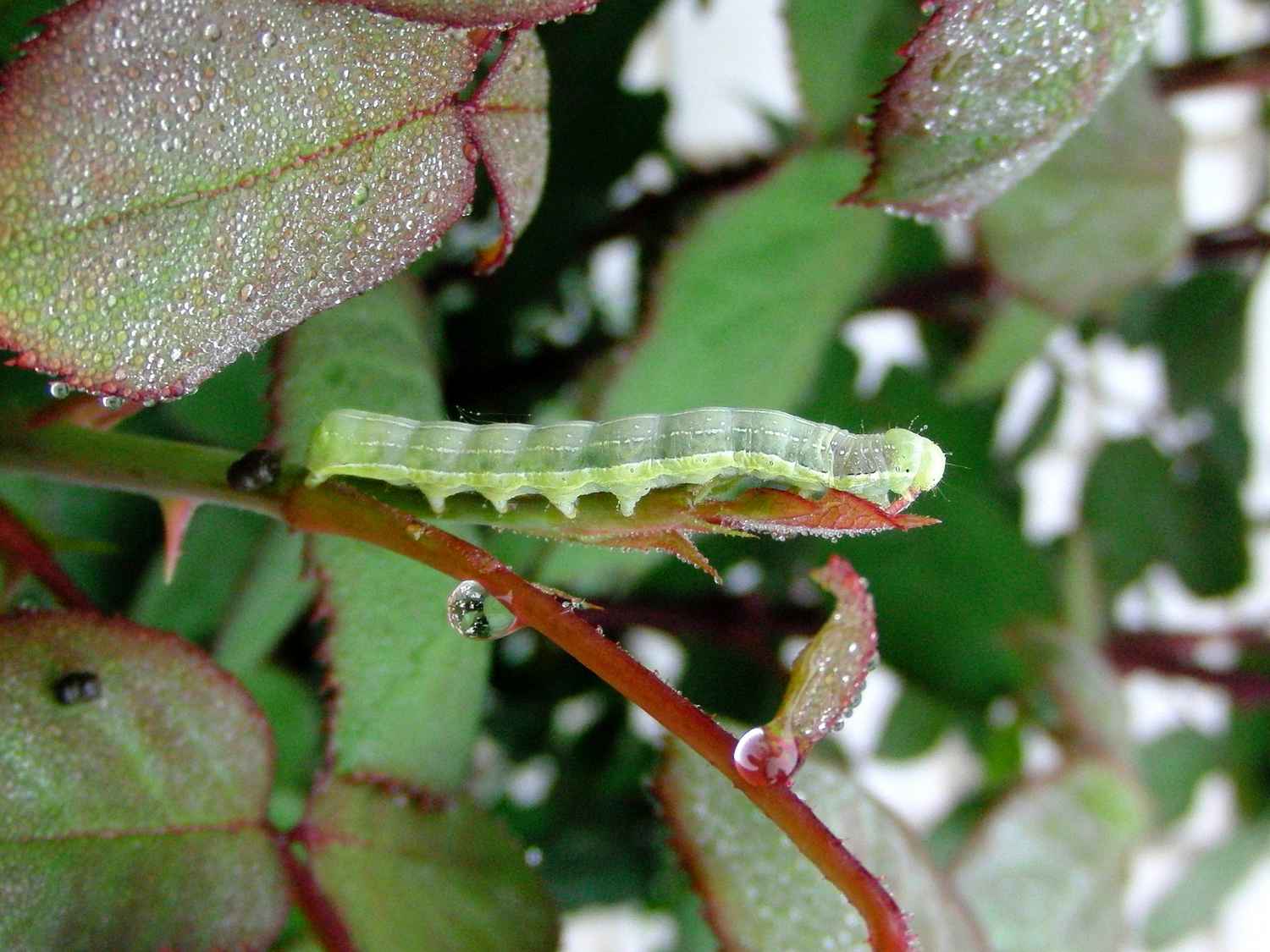
Roses: aphids and other pests
identify them to fight better
Contents
Roses must face diseases as well as attacks from pests such as aphids.
Depending on the observed damage, discover the identity of the pest as well as our solutions and treatments to curb the invasion.
Aphids
-
Symptoms
Small colonies of insects can be observed on the young shoots of roses. This can lead to deformation of the shoots and young leaves, as well as the appearance of sooty mould.
-
Profile
Brown, pink, or green, with or without wings, small or large, aphids always live in groups and prefer to cluster on the youngest tissues: shoots and flower buds. These insects pierce the plants with their stylet and suck the elaborated sap.
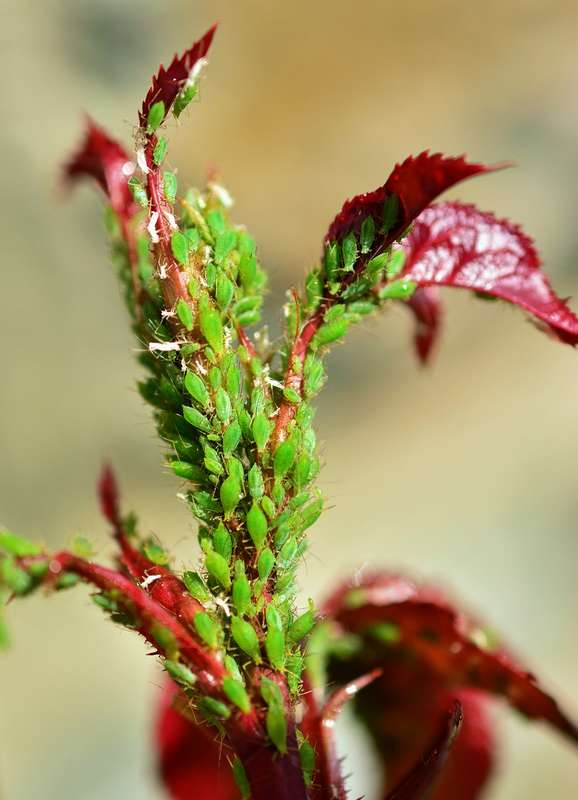
-
Solutions and Treatment
– You can manually crush the aphids.
– Consider using trap plants (chamomile, nasturtium, foxglove…) that will attract aphids and naturally free your roses.
– Encourage the permanent presence of predators and the survival of beneficials: great tits, lacewings, ladybirds…
– Spray a solution of black soap at a rate of 15 to 30g per litre of water at the first signs of attack.
– Insecticides, even organic ones, are not justified in the case of roses.
Feel free to consult our advice sheet: Aphid: identification and treatment and check out our video: Aphids on my roses: is it serious?
Read also
Aphid: identification and treatmentMy rose bush is being eaten by caterpillars!
-
Symptoms
In reality, these are not caterpillars! Thanks to their powerful mandibles, false caterpillars start by stripping the underside of the leaves. Then, they completely consume the lamina, leaving only the central vein.
-
Profile
The culprits are the larvae of sawflies. There are many species of sawflies. The Arge pagana and Allantus cinctus (=Emphytus cinctus) are commonly found in our gardens and on our roses, but there are others.
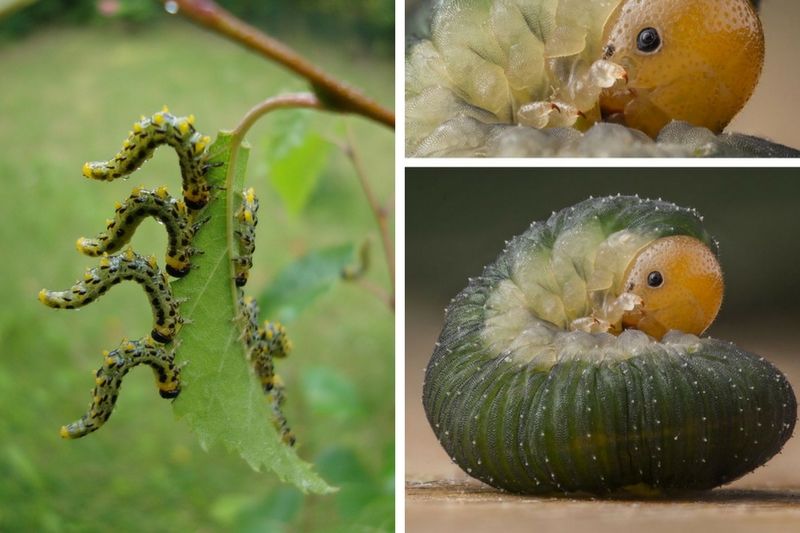
From left to right: Arge pagana – Allantus cinctus
– Arge pagana
Small wasps lay their eggs in the stems of roses, and the eggs hatch into yellow-green larvae (false caterpillars) with numerous small black warts. They act in bands of varying sizes, raising the ends of their bodies to form a characteristic “S” shape when disturbed.
– Allantus cinctus
These false caterpillars are pale green with an orange head.
-
Solution and Treatment
– Encourage the presence of predators: birds (especially great tits), parasitoid wasps, and shrews.
– It is easy to collect the larvae by hand.
– Black soap is effective against sawfly larvae.
Discover other Roses
View all →Available in 0 sizes
Available in 2 sizes
Available in 3 sizes
Available in 2 sizes
Available in 2 sizes
Available in 2 sizes
Available in 2 sizes
Available in 2 sizes
Available in 2 sizes
Available in 2 sizes
The rose buds are being eaten!
-
Symptoms
You observe holes in rose buds. They are partially eaten, and the blooming flower appears deformed.
-
Profile
The culprit may be a species of moth, more specifically Pyrrhia umbra, the caterpillar of a night butterfly that willingly feasts on rose buds.
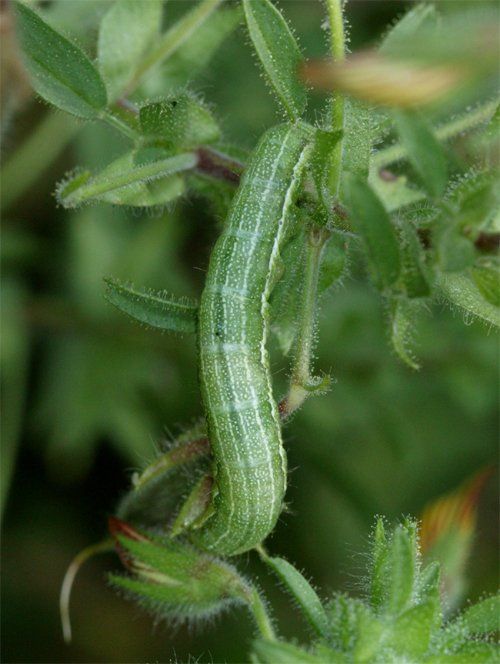
Pyrrhia umbra (Pelouard, galerie-insecte.org)
It could also be the leafroller, another caterpillar that creates galleries in the buds and curls up in silk threads inside leaves that are folded over themselves. If this is the case, refer to point no. 7.
-
Solution and Treatment
– Encourage the enemies of moths: ground beetles, shrews, birds (blackbirds…), bats, parasitoid insects, spiders, amphibians, and even hedgehogs.
– Search for caterpillars at night on the plants and remove the intruders.
– Manual removal of leaves that appear curled over themselves is often sufficient.
– Otherwise, spray Bacillus thuringiensis (Bt) in the evening on young defoliating caterpillars.
– Finally, if the use of Bt fails, spray natural plant pyrethrum.
My roses are being devoured!
-
Symptoms
Flowers are damaged, petals and stamens devoured.
-
Profile
The golden rose beetle, also known as the rose chafer, is not delicate, and when this beetle comes to feed on the flowers, it “chews” and damages them in the process. The same goes for the grey rose beetle. They appear in May-June. The larvae feed on more or less decomposed matter, thus accelerating the decomposition of organic material and the humification of the garden. The adults, on the other hand, are excellent pollinators.
 From left to right: golden rose beetle – grey rose beetle
From left to right: golden rose beetle – grey rose beetle
The rose beetle larva is often confused with that of the cockchafer (white grub), which devours the roots of plants. To distinguish them, there is an excellent mnemonic device:
– rose beetle: big bottom, small head
– cockchafer: small bottom, big head
-
Solution and Treatment
– The simplest solution is to tolerate the rose beetle and enhance biodiversity in your garden. The more food sources there are (thistles, umbellifers…), the less noticeable it will be.
– Organic treatments are ineffective against rose beetles, and insecticides are unnecessary.
– Rose beetles are large enough to be picked up by hand.
– A bowl of crushed fruit in a corner of the garden has been successfully tried by several gardeners. The crushed fruit attracts the rose beetles while sparing the roses and these beneficial insects to our ecosystem.
The leaves of my roses are holed!
-
Symptoms
You observe regularly shaped cutouts on the leaves, round to ovate, always starting from the edge of the leaf.
-
Profile
Don’t panic, this is the work of small solitary bees. With these carefully harvested fragments of rose leaves, megachiles create real little nests placed end to end in galleries dug into decomposing logs or in the soil. Each of these nests is lined with a mixture of nectar and pollen collected on which an egg is laid.
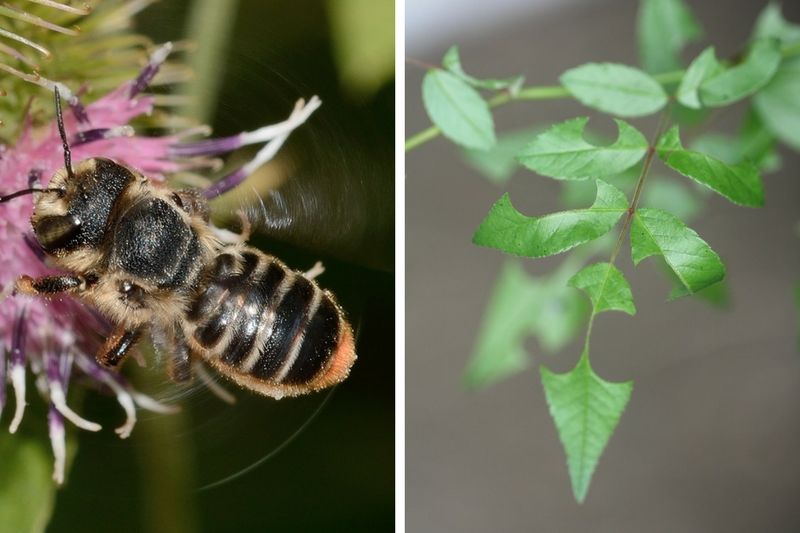 From left to right: Megachile – Holes in rose leaves
From left to right: Megachile – Holes in rose leaves
-
Solution and Treatment
Know that roses hardly suffer from these leaf removals, so no intervention is justified. The presence of these small bees is, on the contrary, highly desirable due to their essential role in the pollination of plants.
The buds on my roses are not opening and are drying out before blooming.
-
Symptoms
Complete drying out of the bud and the floral peduncle is partially severed is observed.
-
Profile
This is the work of the weevil (Anthonomus rubi), a tiny black beetle (2-3mm) that affects strawberries, raspberries, brambles, and roses.
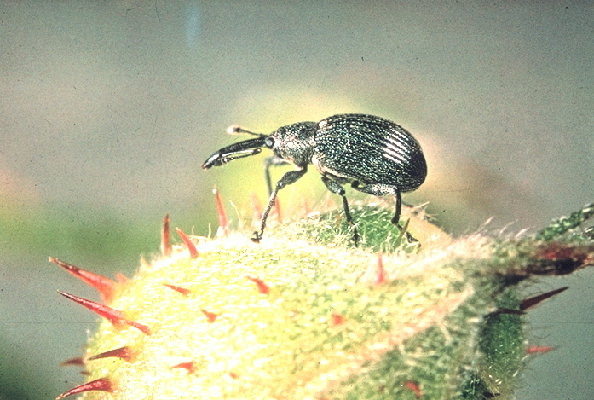
Anthonomus rubi (Coutin R. / OPIE)
The female, equipped with her rostrum, bores into the floral bud before it blooms. She then introduces an egg inside the flower before severing the floral peduncle to stop the flow of sap. The whitish larvae consume the buds even before they hatch. The bud that received the egg therefore does not develop, dries out, hangs along the peduncle, and eventually falls off.
-
Solution and treatment
– Encourage beneficials such as great tits or parasitoid wasps.
– Treat with an organic insecticidal product based on pyrethrum in case of severe infestation.
Rose leaves are curling!
-
Symptoms
Leaves curl in on themselves or fold like a cigar, held together by a fine web of bristles.
-
Profile
This is the caterpillar of a moth (Lozotaenia forsterana) that munches on young shoots and tender leaves. Simply parting a curled leaf reveals the intruder actively nibbling away in its chamber. Surprise, the leafroller will curl up while moving backwards. The curled leaves are unsightly, but the rose bushes are ultimately little affected. These caterpillars, often quite discreet, never invade an entire bed.
-
Solution and treatment
– Handpick the still-inhabited leaves before the moths escape during the summer.
– If necessary, a treatment based on Bacillus thuringiensis can be applied at the first signs of symptoms.
There are little bugs on my roses!
-
Symptoms
You observe small black insects with a metallic blue sheen, often in large numbers on roses.
-
Profile
These are Meligethes (Meligethe aeneus), a common pest of oilseed rape, but for the past few years, they have been invading gardens, not just on roses.
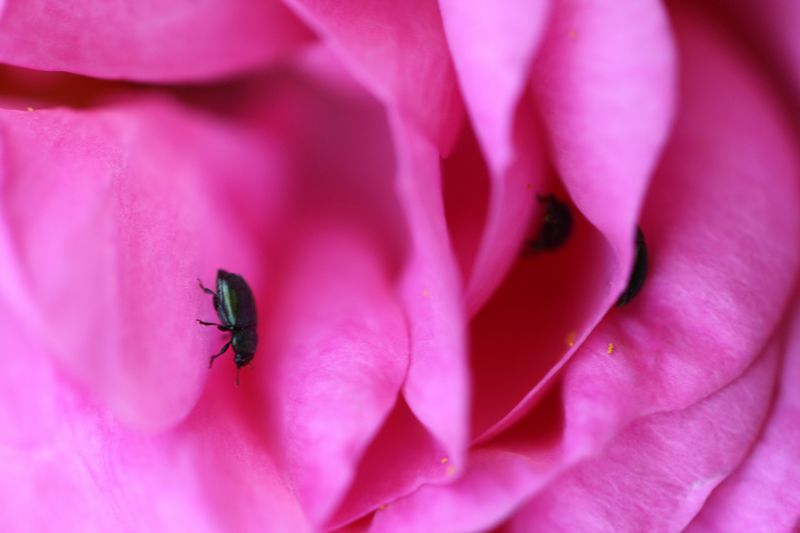
Meligethes in the heart of a rose.
These small beetles pierce the flower buds to feed on the pollen they contain. They also visit fully bloomed roses, but the damage is much less severe.
-
Solutions and Treatment
– Encourage the presence of predators, particularly spiders.
– Insecticides are ineffective.
– You can try shaking the flowers over a basin of water to reduce their population.
→ Learn more in our article Meligethes of roses: how to protect our roses from these pests?
To find out more
- Check the file “Entomological Fauna of Roses” by Remi Coutin.
- Subscribe!
- Contents
































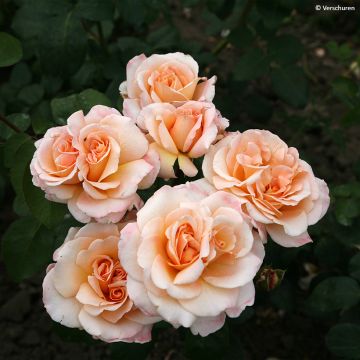
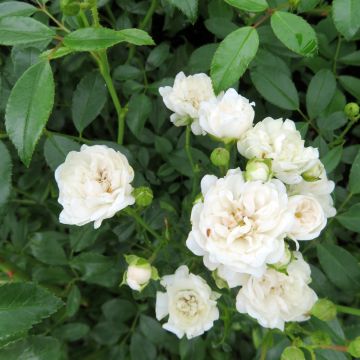



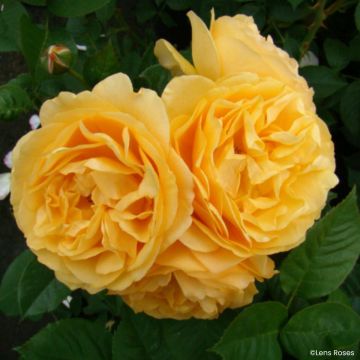
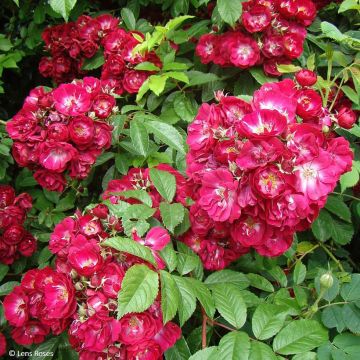
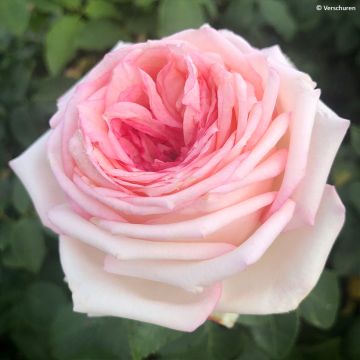
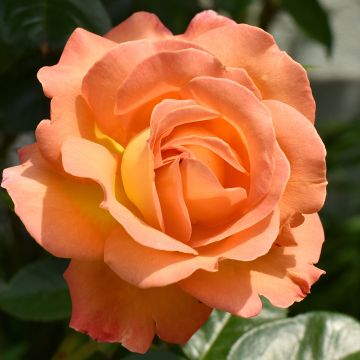
Comments